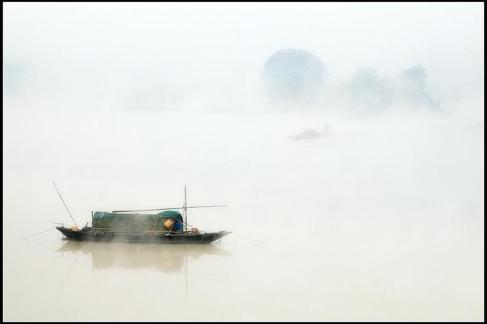So far it seems I’ve been straying quite a bit into Song Dynasty territory, which is quite an intriguing place compared to that of the preceding Tang Dynasty. It’s a dangerous land – where the poems have no titles, the lines are not the same length, and the rules for matching character to character have become even more fiendish.
Several of the blog posts so far (here, here, here and here) have been about these irregular poems, which in Chinese are called 宋词 – literally ‘lyrics of the Song’. (Yes, yes, I see that too.) So here I will say something about this sort of poetry itself – why it is, what sorts of ‘forms’ there are, and what are some of the rules.
History
Of course, having different forms of poetry is nothing surprising. The Japanese, with their haiku and tanka, were also all about syllable numbers. But so was English poetry, with its emphasis on meter and rhythm. So a sonnet, for example, will have 14 lines of iambic pentameter – five repetitions of an iamb. But within this strict structure, you can write whatever you want.
So it was with Chinese poetry, where each dynasty often had its own distinctive forms. The evolution of lyric poetry actually began in the middle to late Tang Dynasty; at the start they actually were lyrics, to tunes which unfortunately we no longer know these days. Those tunes set restrictions on how many characters there could be at each line, and presumably also their rhyming patterns; and so Chinese poetry first began to leave the old system where every line was the same length, mostly of 4, 5 or 7 syllables.
Forms and Rules
A lyrical ‘form’ is known in Chinese as a 词牌 ci pai, or a 词格 ci ge. Each such form derives its title, from the name of the melody which it was once sung to, which leads to some pretty lovely and evocative titles in themselves – that unfortunately have absolutely nothing to do with the content of each poem.
Each lyrical form, in turn, has its own rules and components. These include:
– How many syllables there are in total to be filled in;
– How many lines there are in the song;
– How many repetitions of the tune, if any;
– The rhyming and tonal patterns that must go into each space for a syllable.
Remembering the South
So, putting it all together, we can look at a shorter example called 忆江南 yi Jiang Nan, literally ‘Remembering the South’. This particular form was composed in the mid-Tang period, and was once called 谢秋娘 Xie Qiu Niang, the name of a renowned courtesan in the composer’s retinue; but after Bai Juyi wrote lyrics to the tune reminiscing about Southern China, the form itself was renamed.
This form normally has 27 syllables in total, spread out over five lines, with a single repetition; and the distribution of syllables across the lines works out like this: 3, 5, 7, 7, 5. As for the rhyming pattern, the second, fourth and fifth lines are to rhyme, and the rhymes are to have a certain tone as well.
So, for comparison, below are the three examples of reminiscing that Bai Juyi wrote.
江南好,风景旧曾谙。日出江花红胜火,春来江水绿如蓝,能不忆江南?
How nice the South,
how familiar its scenery.
The dawn glow of the Yangtze is redder than flame,
The spring waters of the Yangtze are verdant and blue.
How can I but remember the South?
江南忆,最忆是杭州,山寺月中寻桂子,郡亭枕上看潮头,何日更重游?
Remembering the South,
I remember Hangzhou best.
The nighttime osmanthus scent in a mountain shrine,
The sight of the tidal bore while lying in a pavilion.
When shall I come back and visit again?
江南忆,其次忆吴宫,吴酒一杯春竹叶,吴娃双舞醉芙蓉,早晚复相逢?
Remembering the South,
I remember next the Capital of Wu [Suzhou].
The liquors of Wu, fresh as spring bamboo leaves,
The dancers of Wu, flushed with drink as hibiscus.
Now or later, shall we meet once more?
As you can see, if someone was to compose again a tune for this song, it would be possible to sing every set of lyrics easily. Then again, given how different poets write about nicer or darker themes, it might sound a bit incongruous to have a happy tune and horribly sad lyrics. By the time of the Song that might not have mattered so much, with the tunes themselves being lost.
Titling
Of course, all this leads to some confusion about which lyrics people are referring to at one point or another. The resulting convention for titling Song Dynasty lyrics is therefore:
– First, state the form;
– Second, either the first line (the incipit) or the circumstances under which the poem was composed.
For example, Xin Qiji’s little romantic poem is called ‘Lantern Festival’ because… that’s where the poem is set. And Su Shi’s grand poem at the Red Cliffs is called ‘Reminiscing at the Red Cliffs’ because… that’s what he’s been doing during the poem.
Makes sense!
